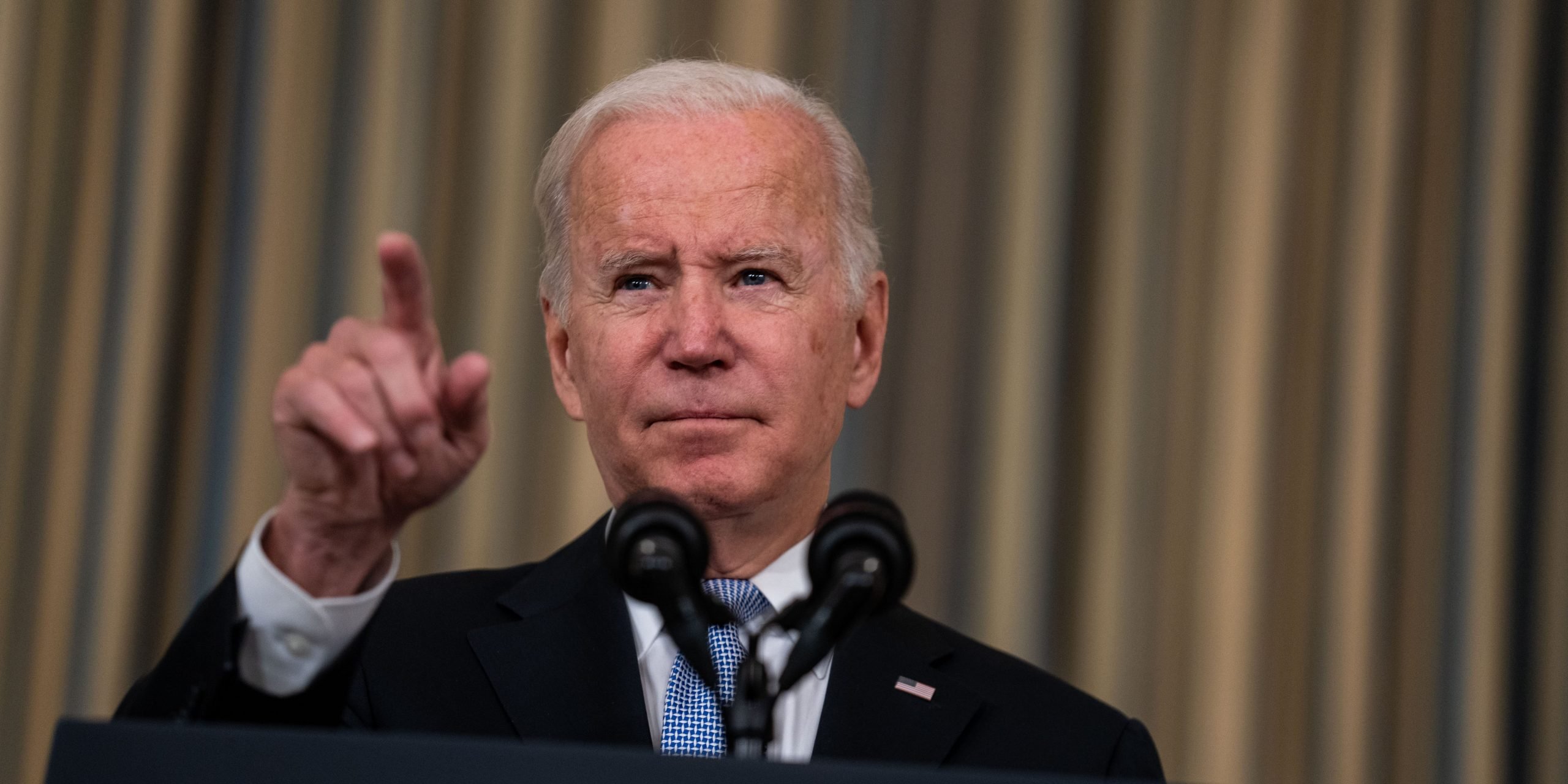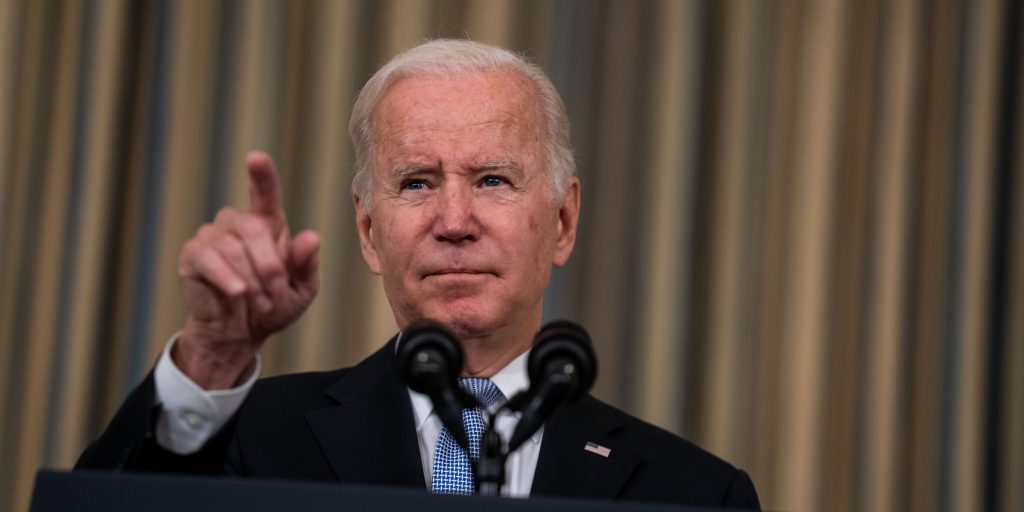
- Biden's plans are helpful, but they won't bring the fast results the economy needs, says former Fed economist Claudia Sahm.
- Americans are desperate for the government to address elevated COVID cases and the hottest inflation since 1990.
- Sahm has four ways the Biden administration can fight the virus and cool rampant price growth.
President Joe Biden's spending plans will shape the US over the next decade, but they aren't enough to solve today's crisis, former Federal Reserve economist Claudia Sahm wrote in a Wednesday blog post.
Biden signed the $1 trillion bipartisan infrastructure bill on Monday and Democrats aim to pass their $1.75 trillion social-spending plan before Christmas. The dual packages are poised to make historic investments in family care, clean energy, and traditional infrastructure as the US emerges from the COVID recession. But as Democrats plan for the next decade, Americans are growing impatient with the problems of now.
"Listen to people. They are telling us they are increasingly worried about the future," wrote Sahm, who is now a senior fellow at the Jain Family Institute.
Americans' confidence in the economy is the worst it's been since the Great Recession. A big reason for the pessimism: a lack of immediate help. Prices are soaring at the fastest rate since 1990, yet there's a "growing belief" among Americans that "no effective policies" have been used to cool inflation, Richard Curtin, chief economist at the University of Michigan's Surveys of Consumers, said.
The Fed is the main authority for keeping inflation in check, but that doesn't mean the White House is powerless. Instead of viewing soured sentiment as purely partisan, policymakers should focus on solutions to the problems still plaguing the economy, Sahm wrote.
Here are the four ways the Biden administration can clamp down on COVID and speed up the economic recovery, according to Sahm.
1. Get more shots in arms
Virus cases are down from September highs, but COVID remains "enemy number one," Sahm said. Since the start of the pandemic, most economists have pegged the path of the recovery to the path of the virus. Data since has confirmed that: When virus cases climb, the rebound hits snags.
The administration can speed up the broad recovery by amplifying its push for booster shots and enforcing vaccine requirements, Sahm said. Even if the White House "can't fix the politics around COVID," it can do a better job at fighting the virus, she added.
"You can get the vaccine to every person who wants it and communicate honestly with people who are on the fence," Sahm said. "Enforce vaccine mandates immediately."
2. Unclog the backlogs at ports
Much of the higher inflation seen today is linked to the supply-chain crisis hammering the US. Order backlogs, product shortages, and shipping bottlenecks have led companies to hike prices, and much of the problem lies at ports. A shortage of truck drivers, warehouse workers, and crucial equipment has left companies scrambling to process shipments and balance supply with Americans' colossal demand.
The problem is largely a private-sector one, but Biden can lend a hand. The administration should collaborate with port authorities and transportation operators to hasten the processing of the massive order backlog, Sahm said. The sooner more supply hits the market, the sooner inflation is likely to cool.
3. Flood the US with cheaper gasoline
Americans are feeling surging energy costs at the pump, with gas prices leaping 6.1% in October alone.
Part of the problem lies with the Organization of Petroleum Exporting Countries (OPEC). The coalition rebuffed Biden's call for increased production earlier in November. Since the group controls much of the world's gasoline supply, the decision practically guaranteed gas prices would stay high.
Yet the White House has a trick up its sleeve. The Strategic Petroleum Reserve — an underground network of crude oil wells — currently holds more than 600 million barrels of oil. Biden should "open up" the stockpile to lower gas prices and dampen inflation where it's hottest, Sahm said.
4. Cut down on pricey tariffs
While the aforementioned actions would indirectly affect prices, the White House has a way to directly weaken inflation. The Trump administration levied tariffs on more than $350 billion worth of Chinese goods, and Biden has left the duties in place. Yet the tariffs have largely translated to higher prices as companies pass on the costs to everyday Americans.
Though the tariffs were in place long before pandemic-era inflation, removing them would help ease price growth, Sahm said.
"These solutions are not exhaustive, but it's exhausting that we are two years into this mess and we do not have a real plan," she added. "We are not doomed. People are frustrated with policymakers, but it's been worse."
Dit artikel is oorspronkelijk verschenen op z24.nl

